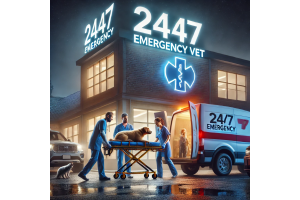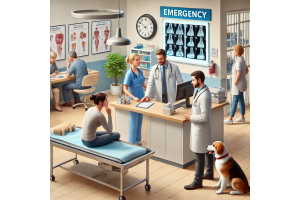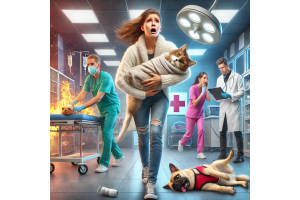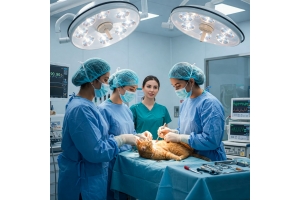Preparing for a Pet Emergency: Essential Steps
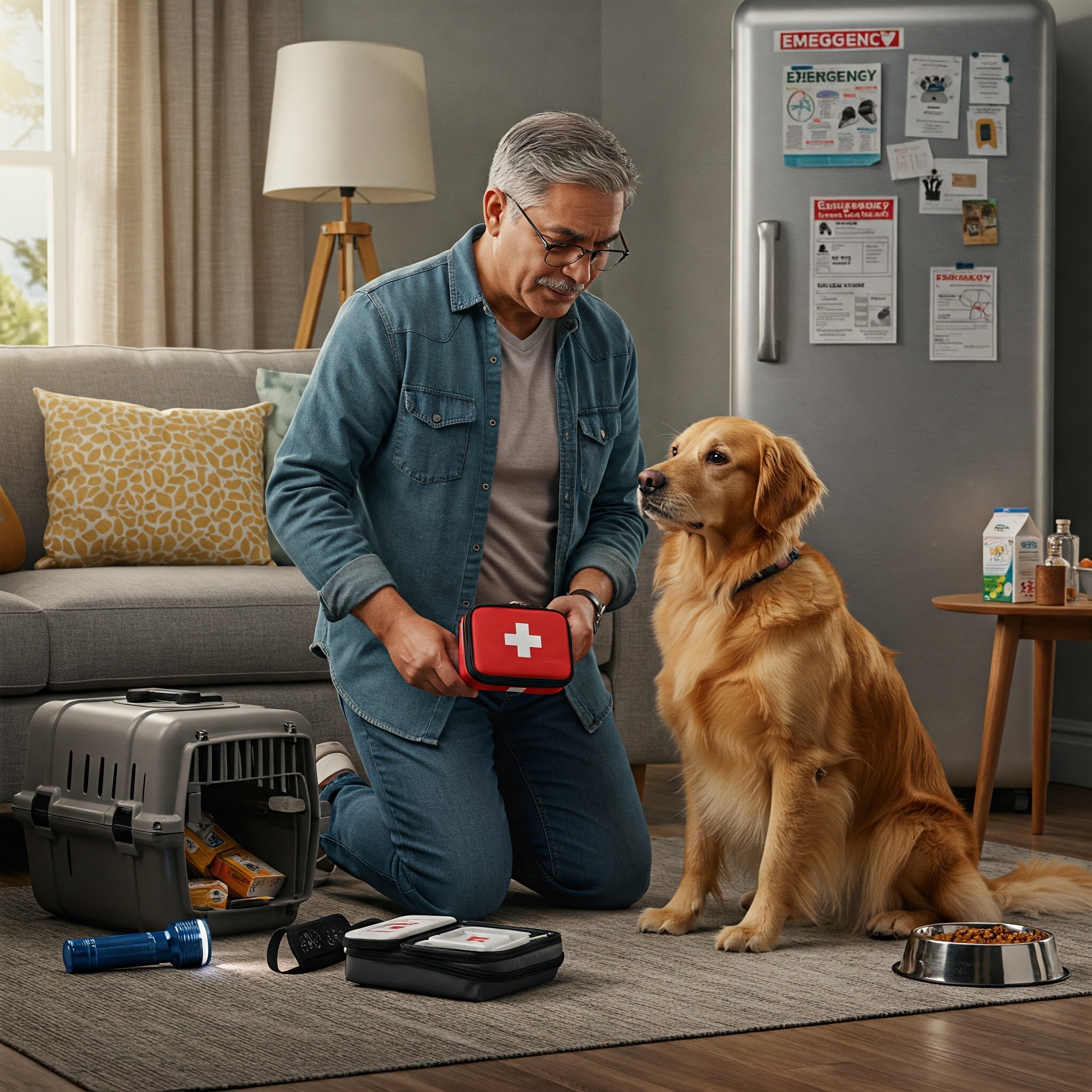
As a pet parent, it’s essential to be ready for any unexpected situations that may arise. Just as we are prepared for emergencies in our own lives, being prepared for a pet emergency can make all the difference when every second counts. Whether it’s an injury, illness, or sudden change in behavior, knowing how to act and being equipped to handle emergencies can significantly reduce stress and ensure your pet gets the care they need without delay. Below are several essential steps to ensure you're fully prepared for any emergency involving your pet.
- Keep Emergency Numbers Handy
In an emergency, every second counts, and the ability to contact the right professionals immediately can make a huge difference in the outcome. Ensuring that you have all the necessary emergency contact information easily accessible is the first step toward being prepared.
- Your Regular Veterinarian: Always keep the contact information for your primary veterinarian on hand. While your regular vet may not be available outside of normal office hours, they may have an after-hours emergency line or be able to refer you to a trusted 24-hour vet hospital.
- Nearby Emergency Pet Hospitals: In cases where immediate action is needed, knowing where the nearest 24-hour emergency pet hospital is located can save valuable time. Make sure you know the route and how to get there quickly, especially if you’re in a panic.
- Animal Poison Control: Pets often find themselves in dangerous situations involving toxic substances like household chemicals, plants, or human food. Having the number for emergency veterinary services on hand can help you get expert guidance on how to handle poisoning cases.
- Important Contacts Saved: Save all these contacts in your phone and, just in case your phone is unavailable, write down a physical copy of these numbers and keep it in a place where you can easily find it. This simple step ensures that no matter what happens, you're prepared to act immediately.
By having this information saved and readily available, you eliminate the stress of trying to find it when you’re in an urgent situation, making the process of seeking help much smoother.
- Create a First-Aid Kit for Pets
A well-stocked first-aid kit is an essential part of any pet emergency plan. Having one on hand ensures that you’re prepared to treat minor injuries and stabilize your pet’s condition while waiting for professional medical help to arrive. A pet first-aid kit should include:
- Gauze and Bandages: These are essential for treating wounds. Gauze can help control bleeding, while bandages keep the gauze in place and protect the wound from infection.
- Antiseptic Wipes and Ointment: Use these to clean wounds and help prevent infections. These are especially useful when you need to disinfect an area before applying a bandage.
- Tweezers and Scissors: Tweezers are necessary for removing splinters, ticks, or any other foreign objects lodged in your pet's skin. Scissors can help cut bandages or gauze to the right size.
- Digital Thermometer: A thermometer will allow you to check your pet’s temperature to detect signs of fever, which could indicate an infection or illness.
- Muzzle or Soft Restraint: If your pet is in pain, they may react aggressively. A soft muzzle can help prevent biting during stressful situations, while allowing you to handle them safely.
- Medical Tape or Wraps: Medical tape holds bandages and gauze in place securely. It can also be used for splinting injured limbs until you get to a vet.
- Hydrocortisone Cream or Antihistamines: These can help treat mild allergic reactions and prevent your pet from itching at the site of a bee sting or other allergy-causing substances.
Familiarize yourself with how to use these items properly. A pet first-aid course can be extremely beneficial to learn how to treat a variety of injuries and conditions. Knowing what to do in a stressful emergency can make a big difference in your pet's recovery time and reduce the risk of complications. Additionally, check the contents of your first-aid kit regularly to ensure everything is in good condition and up to date.
- Know Basic First-Aid
Learning basic pet first-aid is one of the most important steps in preparing for an emergency. This knowledge can help you act quickly to treat injuries and provide immediate care until you can get your pet to the vet.
- CPR for Pets: Learning how to perform cardiopulmonary resuscitation (CPR) for pets is crucial if your dog or cat stops breathing or has no pulse. Pet CPR is different from human CPR, so it's important to learn the proper technique.
- How to Perform CPR on a Dog or Cat: Place your pet on a firm surface, then check their airway to make sure it’s clear. If the airway is obstructed, gently open the mouth and remove any objects blocking it. If they aren’t breathing, provide mouth-to-snout breathing or perform chest compressions (depending on the size of your pet).
- Choking Hazards: If your pet is choking, you should attempt to dislodge the object. If they are conscious, gently hold your pet upside down and try to shake out the object. If that doesn’t work, perform the Heimlich maneuver for pets by applying pressure to the abdomen. Always ensure that the object is cleared to avoid suffocation.
- Stopping Bleeding: Applying pressure to a wound can stop bleeding temporarily. Use clean gauze or a cloth to apply firm, constant pressure to the injury. If the bleeding is severe, you may need to apply a tourniquet (above the injury) to control the flow of blood until professional help arrives.
- Treating Burns and Poisoning: Knowing how to treat burns or manage poisoning can save your pet’s life. For burns, rinse the affected area with cool (not cold) water, and for poisoning, contact your vet or an animal poison control hotline immediately for advice on whether to induce vomiting or provide activated charcoal.
Taking a first-aid course, especially one designed specifically for pets, will give you hands-on training and confidence to provide the best care in an emergency. There are also plenty of online resources and books dedicated to pet first-aid that can help you learn these vital skills.
- Keep Your Pet’s Medical Records Accessible
In an emergency, time is of the essence. Having your pet’s medical records accessible ensures that the vet has all the necessary information to provide quick, effective treatment. You’ll want to have a record of:
- Vaccination History: Knowing when your pet last received vaccines, particularly rabies shots, can help a vet assess their condition more quickly.
- Medications and Dosages: If your pet is on any medications, make sure you have the name, dosage, and administration instructions readily available.
- Pre-existing Conditions: Record any ongoing health issues, such as allergies, arthritis, or heart conditions, that your pet may have. This helps the vet provide tailored care during the emergency.
- Emergency Treatment Instructions: If your pet has had prior surgeries, conditions like diabetes, or any specific health needs, make sure you have that information available for quick reference.
You can store these records digitally, either on your phone or in a cloud-based system. Some apps allow you to store medical records in a secure way, which can be easily shared with your vet in case of an emergency. If you prefer physical copies, keep them in a safe but easily accessible place. This could include a folder with copies of vaccination records, prescriptions, and important health information that you can bring with you if you need to rush your pet to the hospital.
- Know the Location of 24-Hour Emergency Hospitals
Emergencies rarely happen at convenient times, which is why it’s crucial to know the nearest 24-hour emergency pet hospital. It’s a good idea to locate at least one emergency facility that is within a reasonable driving distance of your home. Take note of:
- Address and Directions: Know the exact address of the emergency vet hospital, and plan your route ahead of time. In the heat of the moment, trying to find directions while driving can waste precious time.
- Availability: Some veterinary hospitals may only offer emergency services at certain hours or days, so verify if they are open 24/7.
- Emergency Contact Information: Keep the phone number of the emergency hospital saved in your phone, and program it into your car’s navigation system if possible. This will save time in case you need to call ahead or ask questions while en route.
Additionally, many emergency hospitals have specialized departments, such as trauma care, critical care units, or even surgical suites for pets in distress. Knowing which hospitals have these services can help you make the best decision for your pet’s care during an emergency.
Having a backup emergency plan is also important. In case your usual clinic is too far away or closed, research nearby veterinary hospitals that offer 24/7 emergency care.
Conclusion
Pet emergencies are stressful and often happen when you least expect them. However, by following these essential steps and being prepared, you can reduce the impact of the crisis and ensure that your pet receives the best care as quickly as possible. Keeping emergency contacts accessible, having a well-stocked first-aid kit, knowing basic first-aid techniques, storing your pet’s medical records, and being aware of nearby emergency facilities are key components in your emergency preparation plan. When you’re ready and informed, you'll be able to respond effectively, no matter what unexpected situation arises.

